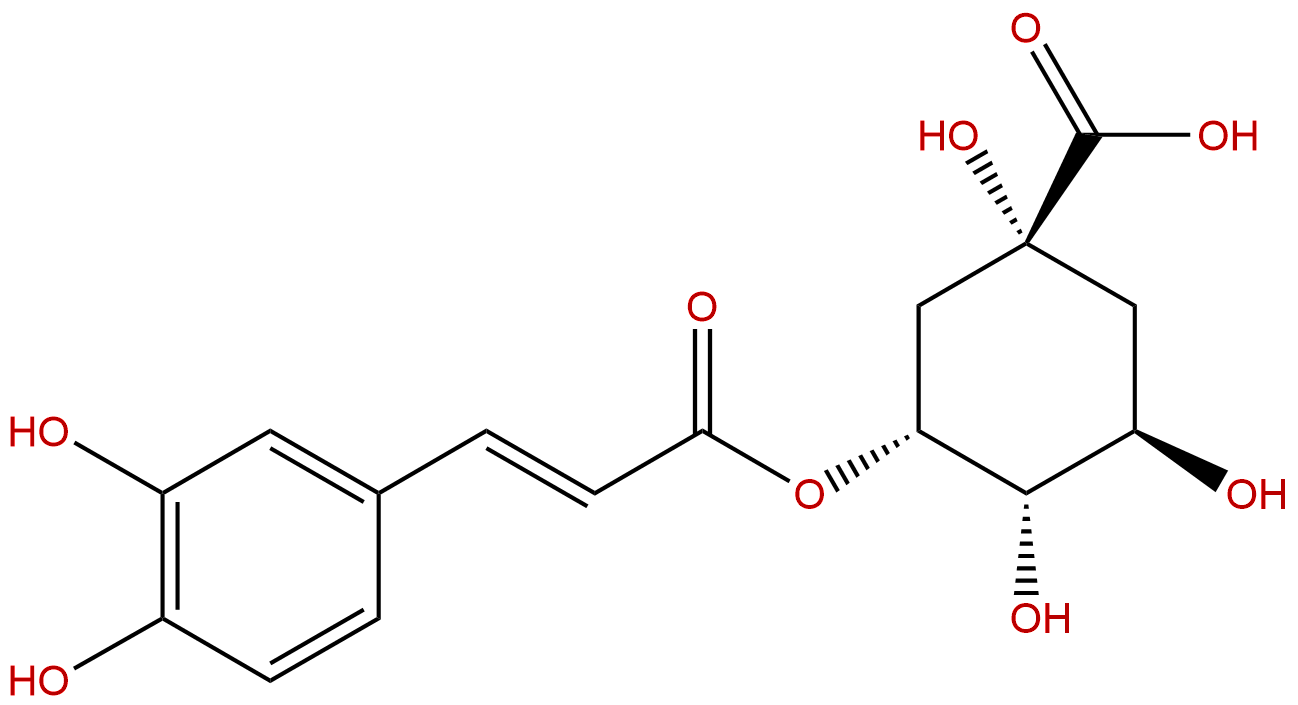
Neochlorogenic acidCAS No.:906-33-2
|
||||||||||
 |
|
|
||||||||

| Catalogue No.: | BP0083 |
| Formula: | C16H18O9 |
| Mol Weight: | 354.311 |
Product name: Neochlorogenic acid
Synonym name: Caffeoylquinic acid
Catalogue No.: BP0083
Cas No.: 906-33-2
Formula: C16H18O9
Mol Weight: 354.311
Botanical Source:
Physical Description: Powder
Type of Compound: Phenylpropanoids
Purity: 95%~99%
Analysis Method: HPLC-DAD or/and HPLC-ELSD
Identification Method: Mass, NMR
Packing: Brown vial or HDPE plastic bottle
Storage: Store in a well closed container, protected from air and light. Put into refrigerate or freeze for long term storage.
Whenever possible, you should prepare and use solutions on the same day. However, if you need to make up stock solutions in advance, we recommend that you store the solution as aliquots in tightly sealed vials at -20℃. Generally, these will be useable for up to two weeks.
The product could be supplied from milligrams to grams, up to kilograms
Inquire for bulk scale.
Descriptions:
Neochlorogenic acid (NCA) is a natural polyphenolic compound found in dried fruits and other plants, has shown that phenolic acids including NCA have outstanding antioxidant, antibacterial, antiviral, and antipyretic activities, it also exerts neuroprotective effects through the inhibition of pro-inflammatory pathways in activated microglia.[1]
Neochlorogenic acid (NCGA), chlorogenic acid (CGA) and its isomer, were found to be the major phenolic compounds in the flesh and peel of three peach cultivars, the high concentrations of CGA and NGA in immature fruits might contribute to their reduced susceptibility or increased resistance to brown rot infection by interfering with fungal melanin production.[2]
Neochlorogenic acid and chlorogenic acid could be colon cancer suppressive components of the prune.[3]
References:
[1] Kim M, Choi S Y, Lee P, et al. Neurochem Res, 2015, 40(9):1792-8.
[2] Villarino M, Sandín-Espa?a P, Melgarejo P, et al. J Agr Food Chem, 2011, 59(7):3205-13.
[3] Lee S O, Thurow T, Rom C R, et al. UARKive, 2012,5.
[4] Bing H E, Yang S Y, Yan Z. J Chinese Pharm Sci, 2012, 47(16):1280-4.
HPLC of Neochlorogenic acid
